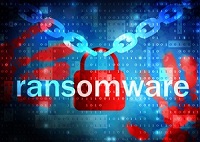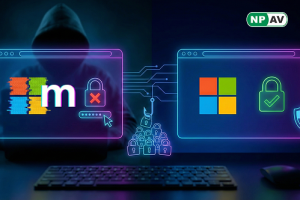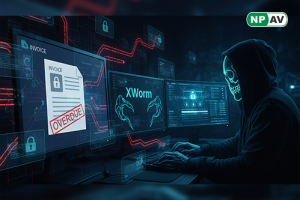Top Ransomware Prevention Tips that May Save Your Computer from Destruction.

To the credit of cybercrooks and hackers, the creation and spread of ransomware have changed the face of computer viruses and malware as we know it.In fact, recent ransomware threats have become some of the most destructive types of malware known to Windows PCs having the ability to encrypt files and hold a system for a lucrative ransom feethat sometimes ranges from $100 up to well over $1000 in some cases.
Did you know that can do many things to take a proactive stand against ransomware?
Top Ransomware Prevention Tip:
- Backup your hard drive and/or important files.
Having a backup copy of your hard drive or files on an external drive or cloud drive will ensure that any files lost from apotential ransomware infectioncan be recovered.
- Never open suspicious or questionable email attachments.
Emails with attachments that appear to be spam or are messages from someone that you do not know or recognize should be avoided at all costs.
- Set up and personalize anti-spam settings.
By personalizing your spam detection settings to capture messages that appear to be suspicious or are from unknown senders will be an important step in preventing the infection of ransomware.
- Stop suspicious processes.
Ransomware commonly takes time to encrypt files. If you notice a process for a ransomware threat running to encrypt files, halting the process may stop the action of encrypting files on your computer.
- Think before clicking.
New ransomware threats may eventually utilize enticing links within spam messages to spread. - Set your security software to scan compressed and archived files.
Most security and anti-malware applications have a setting to scan compressed and archived files, so no files are left to propagate malware.
- Setup Windows to show file extensions.
By enabling the "Show File Extensions" feature, you will be able to easily tell what types of files are being opened so you may steer clear of potentially harmful files that may result in the installation of ransomware.
- Turn on and properly configure the Windows Firewall.
Utilize the built-in Windows Firewall function and properly configure it tp catch unknown remote sources may lead to malware infections or the download of suspicious files that install Ransomware.
- Setup additional Firewall protection.
Simply configuring your Windows Firewall properly is great. - Intensify the security of Microsoft Office applications.
Microsoft Office documents and applications are primary sources for malware infiltration. You can significantly improve the security of MS Office by disabling macros and ActiveX.
- Disable file sharing.
Computers that aren't infected with ransomware could have their files encrypted by a connected system that is sharing files.
- Disable remote services.
In a business or enterprise environment, malware may leverage Remote Desktop Protocol by black hat hackers where remote services are active on the network.
- Utilize strong passwords at all times.
The failure to employ strong passwords and different ones across multiple logins will ensure your system cannot be attacked through a brute-force remote attack.
- Utilize a web browser add-on to block popups.
In some rare instances; popups may be loaded from malicious sites that act as an entry point for some ransom Trojan attacks. Such attacks could lead to loading of aggressive ransomware threats that encrypt your files.
- Deactivate AutoPlay.
Harmful processes are known to utilize the AutoPlay feature in Windows so they may automatically load at startup or boot process of Windows.Deactivation of AutoPlay will prevent such files from loading onto your computer without your permission. - Keep all of your applications and operating system software up to date.
Lastly, by ensuring all of your software is up-to-date including antivirus/antimalware programs, operating system, web browser apps, Adobe Flash Player, Java and other installed applications, you will eliminate the possibility of your system being compromised through software exploits. Exploitations are a growing concern for the spread of new ransomware threats, and outdated software can be a primary gateway for proliferation.
1 Comment(s)
Reshma W
Apr 09, 2016 18:25
nice information






